Milan's foggy logic: an urban algorithm built on cultural tourism.
How Italy's preeminent economic powerhouse embraced the profitable fantasy that it too can become a world-class tourist destination.
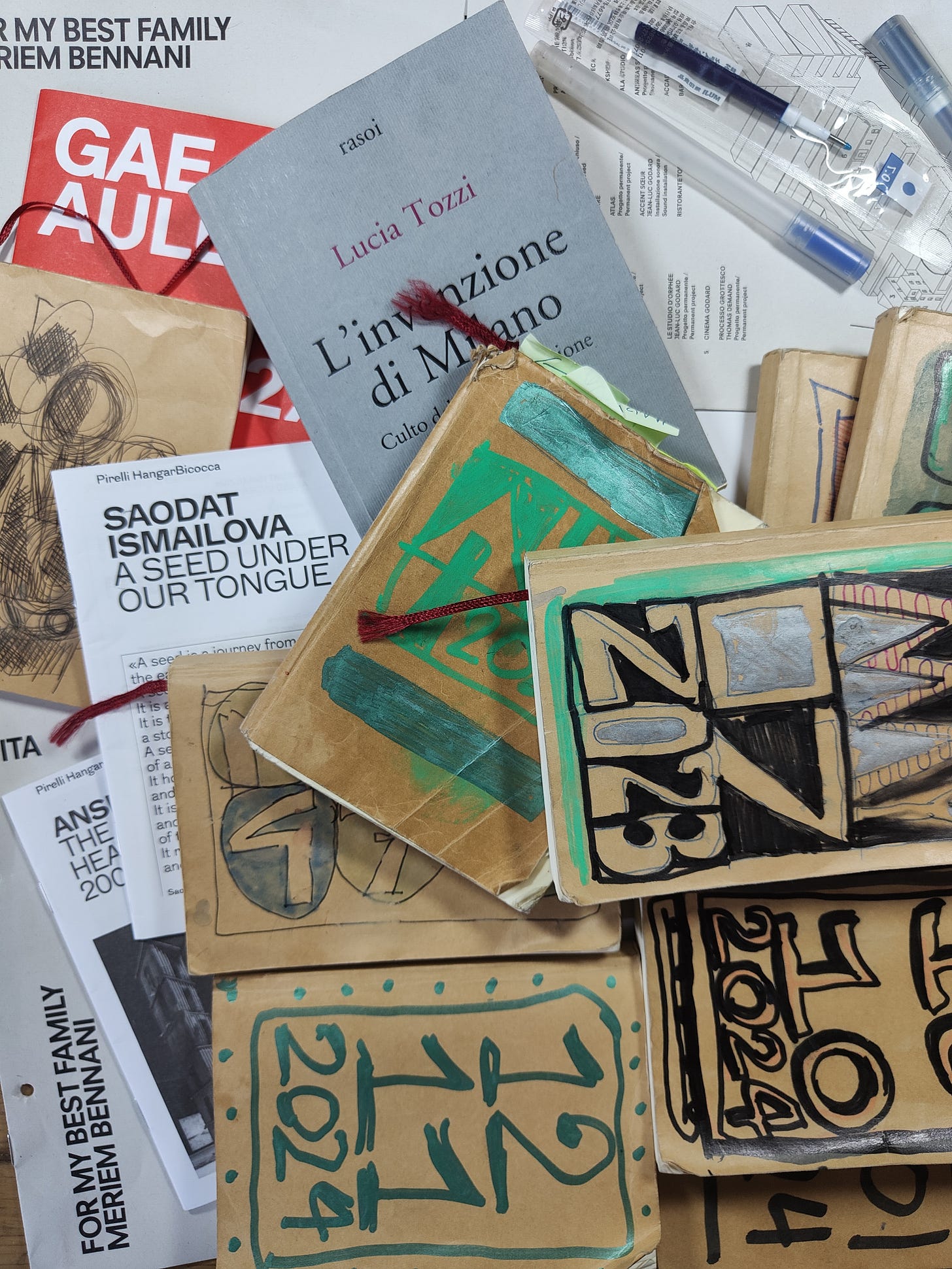
I have to confess that the main reason I travelled up to Milan this week was because I ran out of my Muji blank paper notebooks ( 148 x 105 mm ) and I can no longer get them in Rome. The Muji store here where I have been buying them for years has permanently closed down.
Muji wasn’t the only one. Many local utilitarian shops in the city’s historic center have met a similar fate, disappearing from one day to the next. But should it surprise anyone that there are three Muji stores in Milan?! all in top locations, every one filled with customers. Only Milan isn’t picture perfect either. The northern Lombard city is deeply conflicted, suffering from a longstanding identity crisis.
It’s an insane contrast: While Rome is selling itself out as a mass destination for cultural ruins, Milan is selling itself out as a mass destination for a ruinous culture. This strange paradox becomes unmistakably apparent the very minute you set foot in Milan. So what is it about this foggy town anyway?
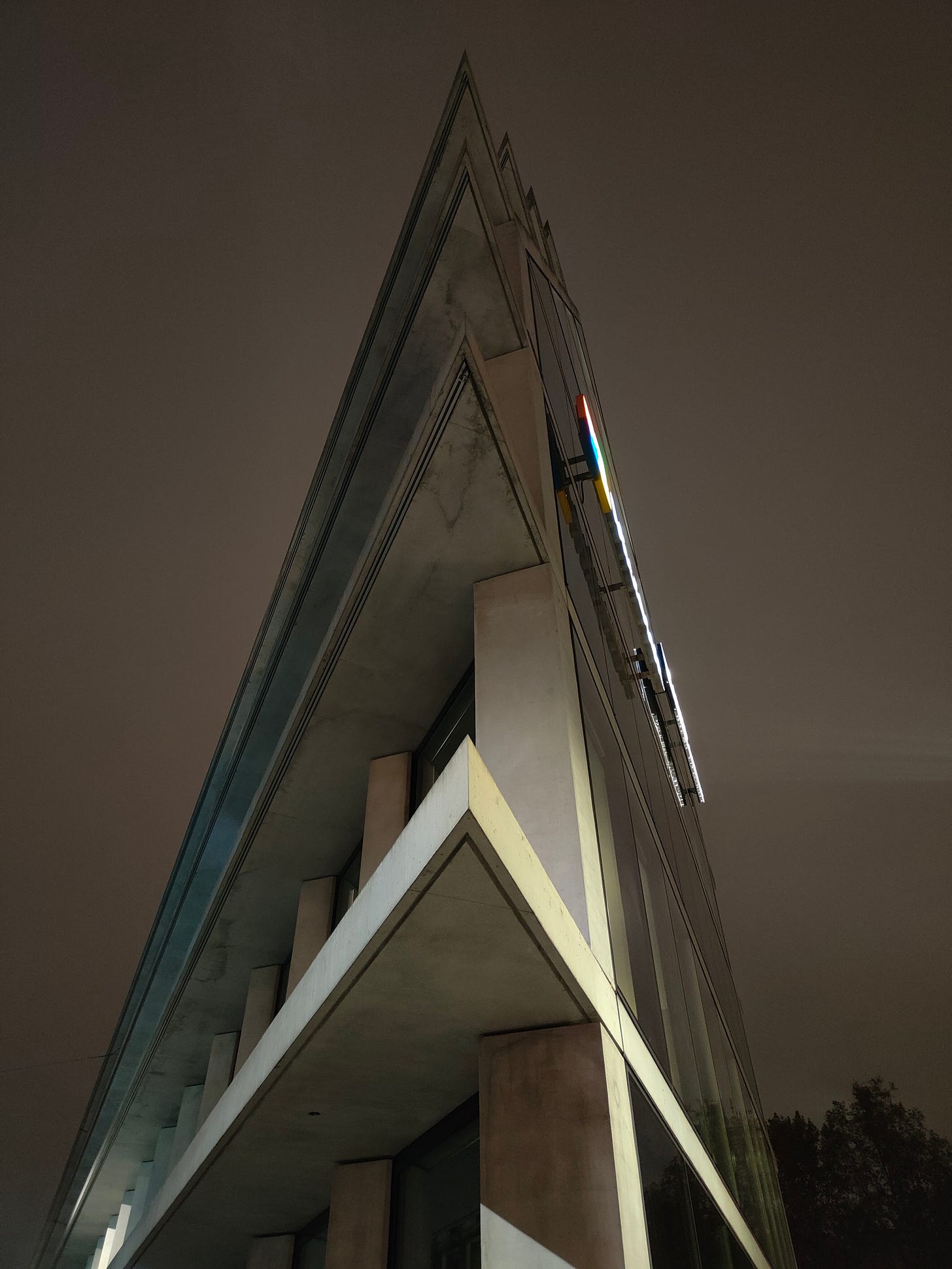
Of course, once I decided to go to Milan, I prepared myself for the trip by cuing up Michelangelo Antonioni’s “La Notte.” Released in 1961, this existentialist masterpiece staring Jeanne Moreau, Monica Vitti and Marcello Mastroianni is a deep dive into Milan’s modernist zeitgeist. The film opens with the camera descending gradually down the exterior of the glass curtain wall of Gio Ponti’s Pirelli Tower, and concludes in an industrialist’s modern country home with its sprawling gardens. Over the course of a single 24 hour day, the writer Giovanni Pontano, played by Marcello Mastroiani, returns to his modern multi-storied apartment ignoring the fanfare his book generates while his wife Lidia, portrayed by Jeanne Moreau, ventures out into the city’s desolate periphery, Sesto San Giovanni, where the couple first lived.
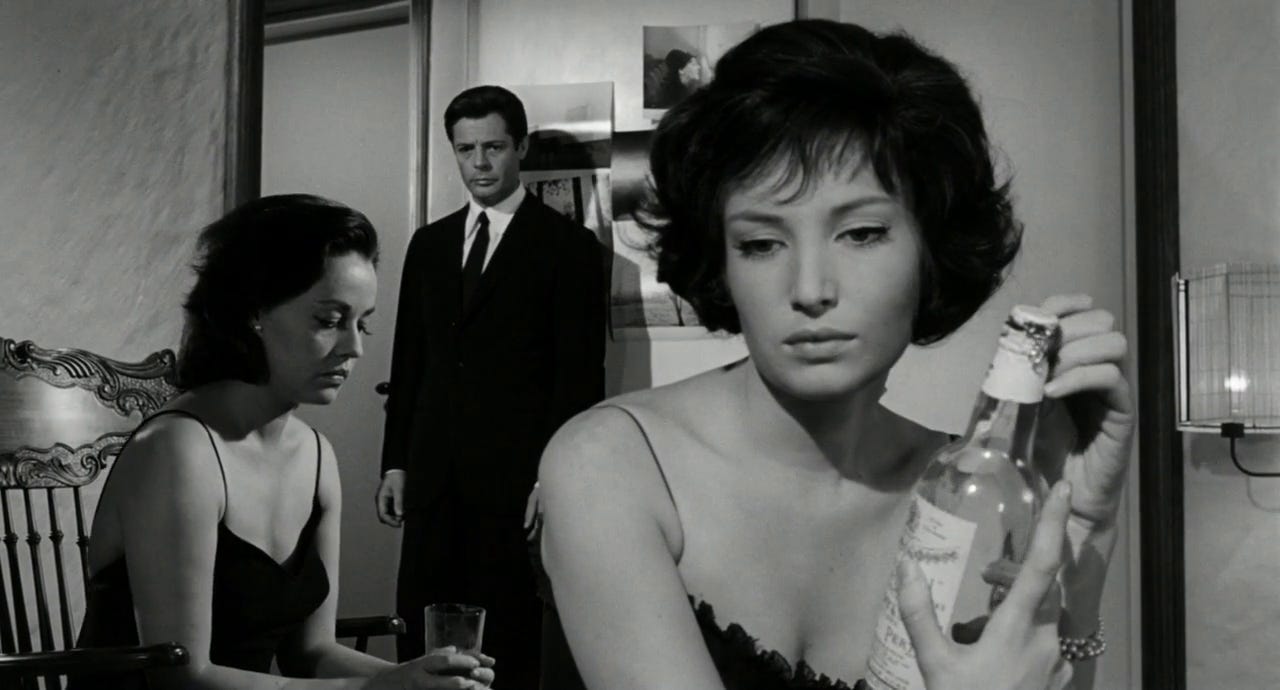
All that I would need to know about Milan is already evident in these scenes. The modern skyscrapers, the anonymous apartment buildings, and above all else, Milan’s ever-present periphery, where farmlands give way to vast construction sites, the rich install their factories and expansive country-homes, and the underpaid and overexploited workers find refuge. This is the formula that more or less continues to this day, but with a twist: while at first these alienating customs were fodder for only the Milanese, now these same familiar narratives are being marketed for mass tourism.
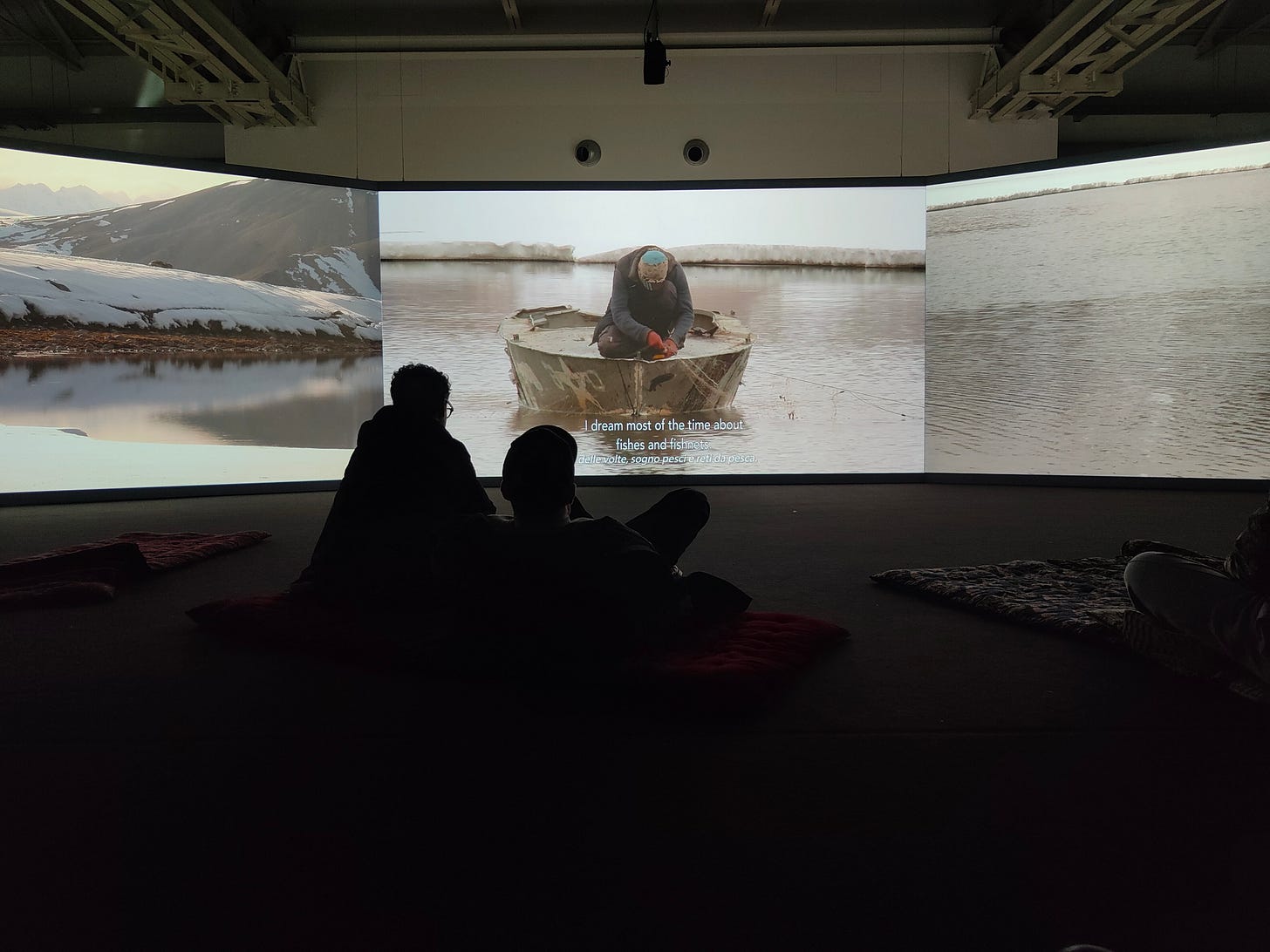
In fact, the moment I arrived in Milan— the plan was to go visit the Pirelli Hangar Bicocca to catch the mystical multi-media exhibition by the Uzbekistani artist Saodat Ismailova— I was swept up into this Milanese cliché. Why? Because the Pirelli Hangar Bicocca is way out in Milan’s periphery, and if you had a chance to visit the foundation when it opened in 2004, you would have found the Pirelli Hangar surrounded by defunct factories, abandoned spaces and other elements of urban detritus. Nowadays, however, the place is teeming with new stuff, including the “Bicocca Village, a vast shopping and entertainment center, a significant public university complex, and stretches of new residential housing estates.
The chicken or the egg question is inescapable. Was the seemingly benevolent promotion of the Pirelli cultural center back in 2004 a vanguard move to bring new opportunities for the people of Milan? Or was the Pirelli cultural center devised to turn an unprofitable and stagnating area of the city, owned by Pirelli, where workers and industry once thrived, into a marketing ploy to attract new and profitable investments based on a cultural anchor?
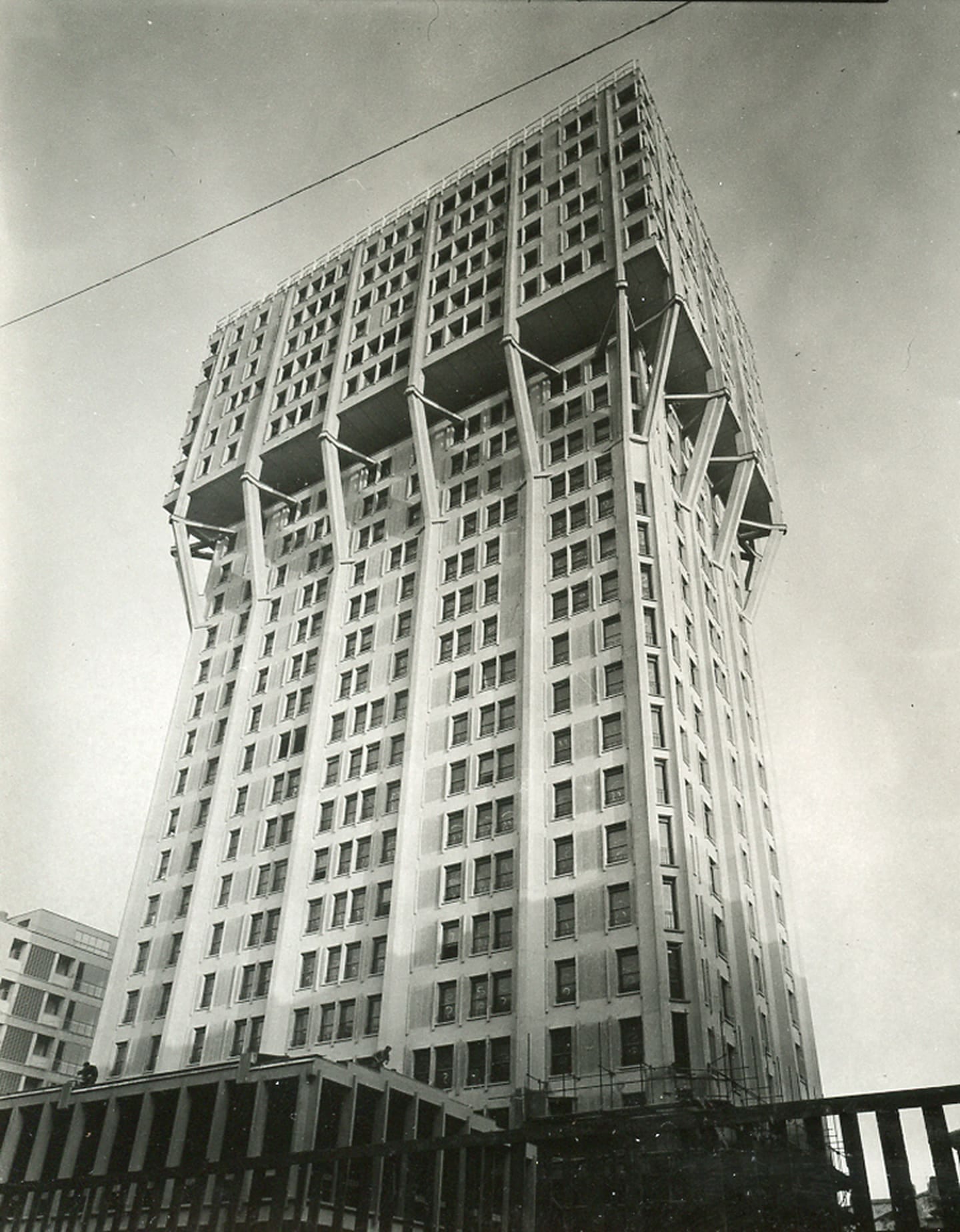
So Milan has its own haunting narrative: its a story about commerce and industry, skyscrapers and speculation, and an all too present periphery. I posed this question to Stefano Mirti, one evening when we were having a spicy hot dinner in Milan’s Chinatown. Mirti, an architect, designer and walking think-tank, recommended I watch “Il Vedovo” (The Widower) a film made in 1959 by Dino Risi, and starring the great Italian comedians Alberto Sordi and Franca Valeri.
Made two years earlier than “La Notte,” the film opens with a pan shot of the Torre Valasca, the anti-modernist skyscraper that scandalized the international architectural community for its subversive take on the city’s medieval past. The premise for “Il Vedovo” is simple: Alberto Sordi’s character owns an elevator manufacturing company, but can’t keep his business afloat. He is from Rome, but his rich and prosperous Milanese wife, played by Franca Valeri, refuses to help him out of his debts. On one of her trips to Switzerland the train derails and it looks like he will inherit her fortune.
The comedy provides a great window into Milanese mores. Yet the film’s story unfolds in what also looks increasingly like a familiar sequence of events: starting with the skyscraper, then to the high-rise apartment, the factory, and the villa in the periphery, a sort of Milanese urban algorithm as I am beginning to see it.
A short clip of the multi-media sound installation “Soul Crushing” by the artist Meriem Bennani, Prada Foundation, Milan. Video by PtL.
My next day’s visit to the spectacular Prada Foundation practically confirms my hunch. The Prada Foundation, when I first went there back in 2016, was still incomplete but fascinating nonetheless, though somewhat inconvenient to reach. When I went this time to see the joyful “Soul Crushing” a multi-media -sound installation by the Moroccan born New York based artist Meriem Bennani, the place looked pristine. While the gallery spaces make ideal showcases for the artwork, the complex as a whole is very much tied to the industrial landscape that encompasses it.
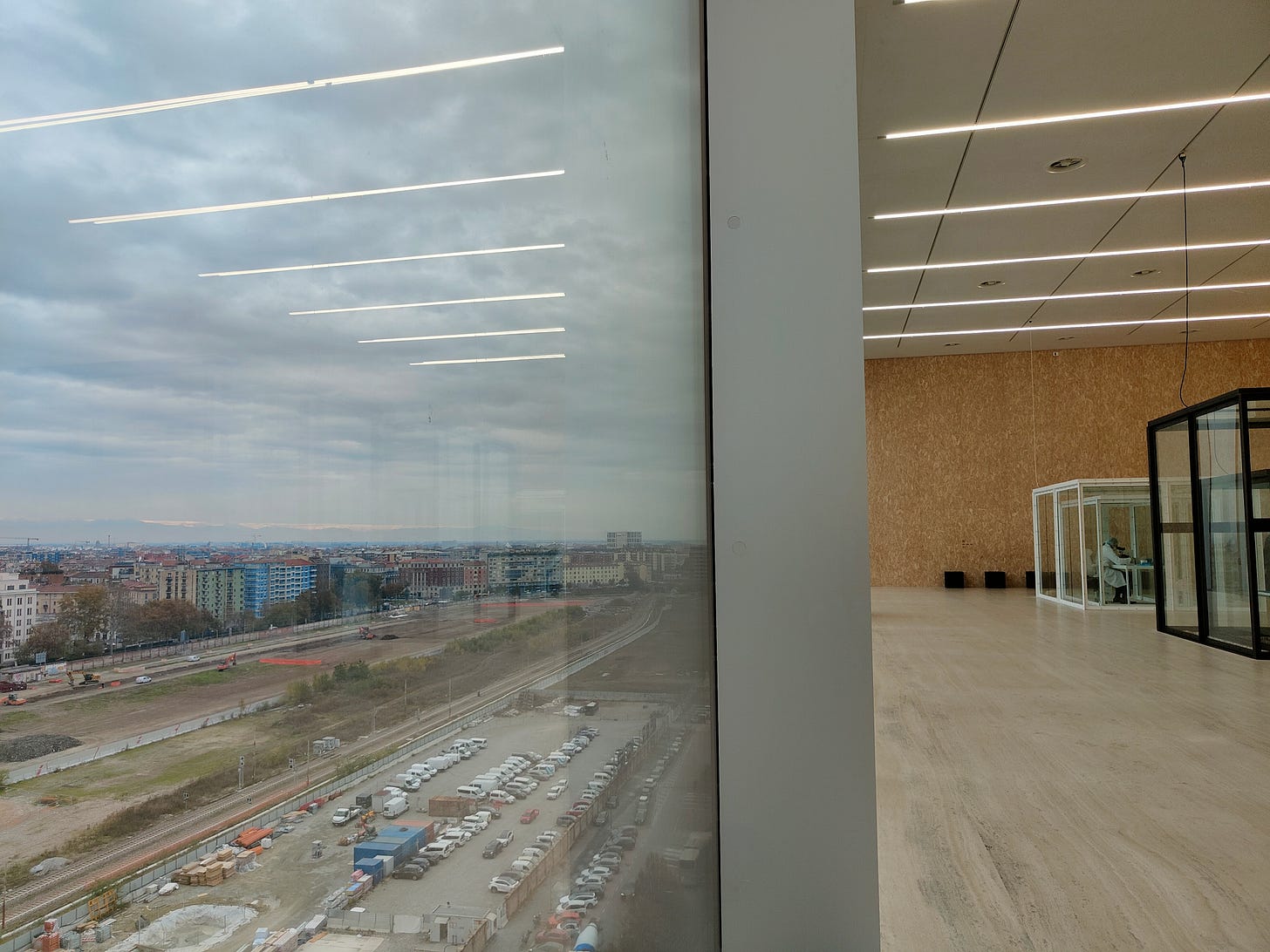
Prada’s house architect, Rem Koolhaas, together with his firm OMA, pulled off an incredible balancing act, tying the old— a former 19th century distillery completely brought back to life, with the new—a series of boldly erected interpenetrating pavilions and tower. If you pull up the “urban algorithm,” however, something else appears on your screen: the Fondazione Prada lies adjacent to an expansive construction site being readied to host an Olympic Village and sprawling green park. Prada Holding is among the financiers.

When I began researching this newsletter I was, as you probably noticed, completely enthralled by Antonioni’s depiction of Milan in “La Notte.” Looking back to the film again I realize that the unruly peripheral landscapes captured by Antonioni, the district known as Sesto San Giovanni, have also become major targets for redevelopment by none other that the star-architect Renzo Piano. And so it goes, as Kurt Vonnegut would say.
One of culture’s strengths is its capacity to tie incongruities together. But there are also disturbing outcomes as well. As Lucia Tozzi notes, in her book “L’invenzione di Milano: Culto della comunicazione e politiche urbane,” published in 2023 (The invention of Milan: Cult of communication and urban politics— not yet translated into English), the process that converted Milan into a mass tourist destination really begins with Expo2015. It was called “Feeding the Planet, Energy for Life,” and as Tozzi wryly puts it, “…if people could accept that a heathy sustainable lifestyle could be sponsored by Coca Cola,” than it wouldn’t be that hard to convince the Milanese that the “…transformation of a few million square meters of abandoned public space would make an efficient response to countering climate change.”
Maybe not everyone agrees with Tozzi, especially on the role of artists and architects who willingly or unwillingly become complicit tools in this process of transforming Milan from an unspectacular working and living environment into a craftily publicized showcase for an over the top tourist hub. Then again, many are shrugging off the fact that Milan has earned the recognition for this year’s best city in Italy. There is no way Milan deserves this prize, the pollution, the high cost of living, the interminable pressure of work in a city where financial success is the only measure of self worth, it just doesn’t add up. Was this award also part of a well managed promotional campaign, or is there some truth to Milan becoming a bonafide cultural destination? No doubt we need to find some clarity in all this foggy logic.
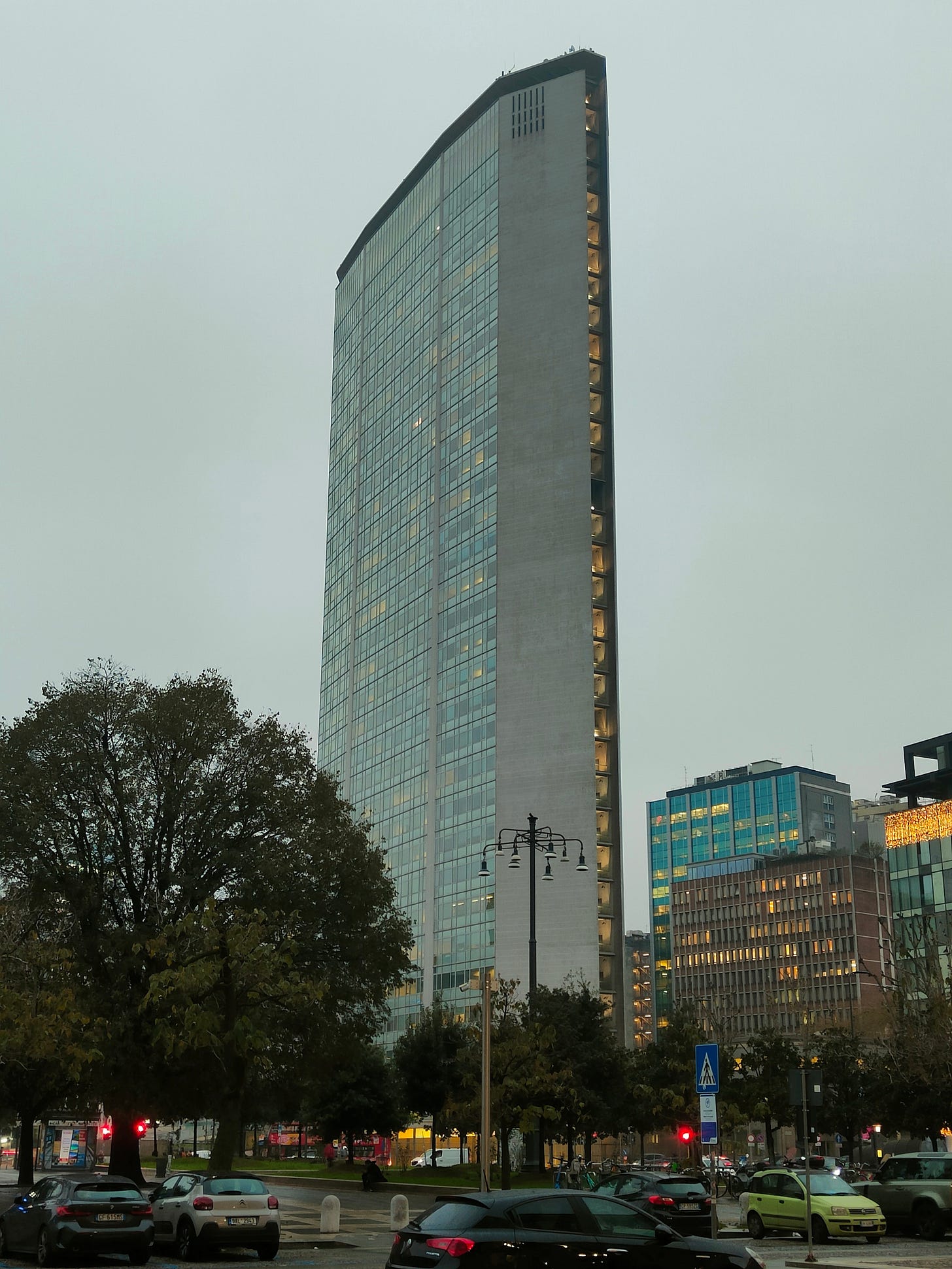
POSTSCRIPT: I just bumped into my neighbor, Andrea Trapani a theater actor, while shopping at my local store back in Pigneto. I mentioned my trip to Milan. He told me he was just there for a month, but found Rome a much more creative environment for his line of work. He added, “I never remember it being this touristic.” I couldn’t help but agree.
POSTSCRIPT 2: Another film to watch on Milan made in 2009, “I am Love” starring the great Tilda Swinton and directed by Luca Guadagnino deals with very similar themes, the rich industrialist, the fantastic house— in this case Villa Necchi (built by the sewing machine magnate) the inevitable flight into the countryside. Swinton masters a pretty good Russian accented Italian too.
POSTSCRIPT 3. Stefano Mirti strongly suggested I visit the Pinacoteca Ambrosiana, just a short distance from the Milan Duomo. It never had come up on my radar before. Literally a treasure trove of art— from Botticelli to Leonardo da Vinci. And guess what? no tourists!


Hi Michael! good to hear from you! I also thought the I am Love film was great, but I am of course a big fan of Tilda! Antonioni is beyond everything... I am not sure you can get the Dino Risi film with English subtitles...
Just saw I am Love - terrific, sumptuous and more. Reminiscent of the Italian films of the 50s and 60s in socio-psychological content. It was fun to watch with a snifter of whiskey. I recall seeing La Notte in the early 1990s as part of an Antonioni festival at the PFA. They showed all his feature films and I saw all of them, what a treat! Thanks for posting your insightful essay.
Michael